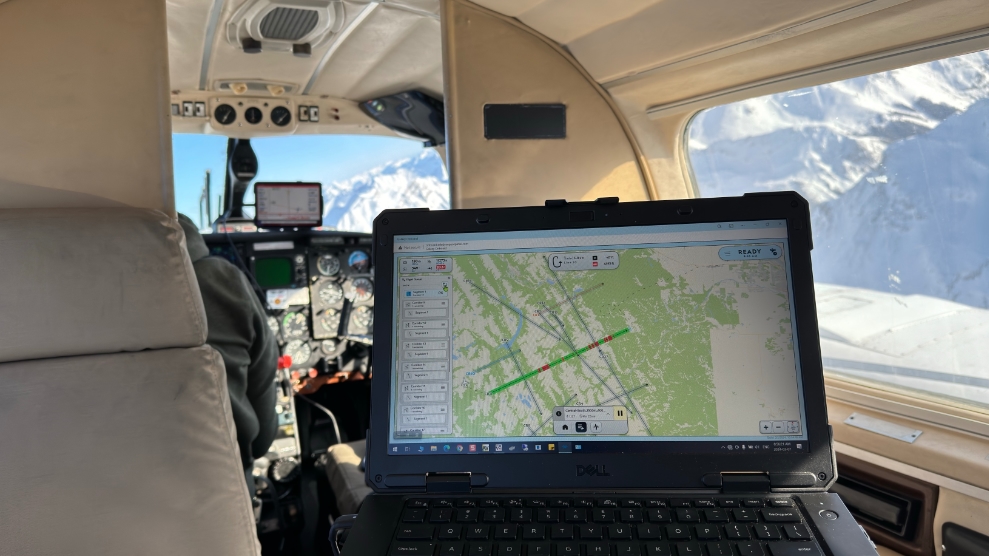The Government of Ontario is entering into a new partnership with SpaceX’s Starlink to provide satellite-based internet services to rural remote and Northern communities.
The Government of Ontario said that the Ontario Satellite Internet (ONSAT) program, worth nearly $100 million, is “part of the government’s nearly $4 billion investment to help bring access to reliable high-speed internet to every community across the province by the end of 2025.”
Many details on the program are still forthcoming, including the registration process “for eligible primary residences and businesses will be available in Spring 2025.”
Resolving the rural Internet gap
Providing rural broadband internet service is a long-standing goal of several levels of Canadian government. The Federal Government’s department of Innovation, Science and Economic Development (ISED) has identified high speed internet for all Canadians (defined by the CRTC as unlimited internet with at least 50 megabits per second download speed and 10 megabits per second upload speed) as a key priority, with ISED said that they plan on “connecting connecting 98% of Canadians to high-speed Internet by 2026 and 100% of Canadians by 2030.” In 2020, the federal government earmarked a $3.225B Universal Broadband Fund for the effort.
That said, however, reporting in the National Post from September of this year suggested that Starlink was not likely to be part of the Federal Government’s plan for providing rural and remote broadband. François-Philippe Champagne, Minister of Innovation, Science and Industry, dismissed an offer made on by SpaceX owner Elon Musk to provide rural Internet as “nonsense,” instead promoting the $2.54 billion funding agreements they made (alongside the Government of Quebec) with Ottawa’s Telesat to build their Telesat Lightspeed constellation. The Minister treated this as part of a made-in-Canada solution for providing rural broadband, one that would be “supporting 2,000 jobs across the country through Telesat and its supply chain.”
Champagne was quoted by the Post as saying that working with Starlink would be akin to “giving money to foreign billionaires instead of supporting our industry and our workers.”
Doug Ford’s Progressive Conservative government appears to disagree with this position, and is officially willing to work with Musk and his company to help resolve the rural internet gap in Ontario. But, it should be noted that the Ford government had previously invested $109M in support of Telesat’s Lightspeed constellation.
IO provides details on the Starlink choice
Infrastructure Ontario (IO) gave more details on the Ontario deal, saying that they have “awarded a contract to Starlink to deliver satellite internet access to 15,000 unserved and underserved homes and businesses” in Ontario in rural, remote, and indigenous areas. IO said that this was the result of “the first competitive process of its kind in Canada,” which featured proposals from several potential providers, of which “two Satellite Internet Service Providers (ISPs) were shortlisted based on technical and financial criteria” found within the government’s RFQ (request for qualifications). Starlink was then chosen as the successful satellite ISP.
IO also said that the contract with Starlink includes requirements for Starlink to “engage directly with the impacted Indigenous Communities, to ensure all eligible households and business within the impacted Indigenous Communities have equal access,” and to “create socio-economic opportunities for the impacted Indigenous Communities, where feasible, through providing employment, contracting, and training opportunities.”
The CBC quoted a spokesperson for Minister of Infrastructure Ash Milton saying that “the province is paying SpaceX $92 million to reserve capacity on its network for the 15,000 customers,” and that “SpaceX has agreed to reserve capacity in its low-earth orbital system, guaranteeing service availability for Ontario customers regardless of global demand on SpaceX’s network.” This statement may refer to the increased congestion of Starlink in some areas, which has prompted the service to impose a $100 ”congestion charge” in certain parts of the United States.
That said, the same coverage of the congestion charge said that certain parts of Canada enjoy a $200 credit for “regional savings,” which appears to include much of Eastern Canada (Quebec, Newfoundland, and the Maritimes) as well as Saskatchewan and Manitoba. Ontario is not included as a province in general, but it is possible that SpaceX may have excess capacity in the parts of Ontario that the Ontario Government is looking to service, leading to a better price than might otherwise be expected.
IO President and CEO Michael Lindsay said that IO “is proud to play a critical role in the procurement and execution of solutions to deliver Ontarians the high-speed internet they need to succeed,” and that “satellite offers the value and feasibility to provide high-speed internet specifically to some of our province’s hardest to reach regions.” Darren Harper, President and CEO of Indigenous consultancy firm Maawandoon, said that their company will work with Starlink and IO on “ensuring that engagement is done thoughtfully and respectfully” regarding the Indigenous communities being served by Starlink.
FSET Managing Partner Nicole Brown was quoted in the release saying that FSET is “is proud to deploy Starlink to assist with advanced digital equity and bridge the digital divide for Indigenous communities across Ontario.” FSET helps with deploying Starlink in Indigenous communities, and while the release did not mention FSET specifically outside of the Brown quote, this suggests that the Spring 2025 release of details may well reveal that FSET is at least one of the partners responsible for the Starlink deployments in the contract. As of yet, however, there’s been no official confirmation.
Joel Cherkis, senior manager of Starlink business operations, said at the announcement that the Starlink constellation’s location in LEO will help provide low-latency Internet to these communities for the first time, which will help members of the communities with “[using] online streaming services, being able to have video calls, being able to do online gaming, or to live your life using the broadband capabilities.”



